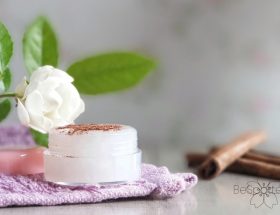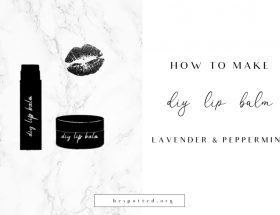This post may contain affiliate links. Any sales made through such links will reward me a small commission – at no extra cost for you!
What is a combination skin type, how to recognize it, what causes it and how to treat combination skin – scroll down to find out.
-
- In essence, combination skin means that some parts of your face are dry and other parts are oily;
- In most cases, dry areas cover the cheeks and hairline, while the T-zone can get pretty oily;
- You can try out the products specifically formulated for combination skin type. Also, multi-masking is your new best friend.
If there is a skin type that is really tricky to get right, it would be combination skin. You get bits of both dry and oily skin. Your cheeks are getting all dry and flaky, often feel like paper on touch. And your T-zone is having a party.
Combination skin type is actually pretty common. As with all other skin types, it can go from mild to severe. In extreme cases, you probably need help from a dermatologist, but usually combination skin can be treated at home.
Combination skin often gets mistaken for some other skin type. So they use either products for oily or for dry skin, and none of that really works for them.
Keep reading to find out how to determine if you have combination skin and what is the best way to treat it.
The Characteristics of Combination Skin Type
Having a combination skin means you have both dry and oily areas on your face. The oily areas usually cover the T-zone, specifically your nose, the middle of your forehead and in some cases the chin. The cheeks and hairline are usually dry.
It is also common to have enlarged pores on your nose, while the pores on the cheeks are smaller and less noticeable. And, since both oily and dry skin can be very dehydrated, combination skin tends to develop a dull, greyish complexion.
What Causes Combination Skin?
As with everything else, the most common cause of combination skin is – genetics. However, the number one thing that can make combination skin worse and make the dry areas really dry and oily parts really oily is improper skin care.
And most girls don’t take proper care of combination skin type simply because they don’t recognize it. So, they are making a huge part of their face worse by using products for either oily or dry skin.
How to Take Care of Combination Skin Type?
The challenge of treating combination skin is obvious – different areas of your face need completely different skincare products.
Dry skin needs lots of moisture and nourishment in a form of heavier, greasier products. Oily skin needs lightweight creams and lotions that will both hydrate the skin and remove the excess oil.
Even the experts are not always on the same page on what approach would be best. Some dermatologists recommend using products specifically formulated for combination skin type. This is a good idea if your skin gives moderate symptoms and doesn’t cause you a lot of trouble.
However, if we are talking about mid-to-extreme combination skin, these products would be insufficient at best.
If your T-zone is super oily and your cheeks tend to get flaky and rough, the products for combination skin are not strong enough to treat either. But, there’s a plan B for treating the combination skin type – treat dry and oily areas of your face separately.
How to Treat Separately Dry and Oily Areas?
The trick is to use mild, gentle products that won’t upset either skin type, then additionally care for each part separately.
If we are talking about cleansing, this would mean washing your face with a mild gel or cream face cleanser – something that wouldn’t even further dry out your cheeks. Then use a stronger mattifying lotion and with a cotton ball apply it only to your T-zone.
Face toners formulated for combination skin type usually do a pretty good job, so you can get away with only one product. Toner balances your skin, improves its tonus, shrinks enlarged pores, evens out the complexion and can be very soothing and hydrating. Just make sure to find a toner that is alcohol-free and suitable for combination skin.
Antioxidant face serums are another great way to add additional nourishment and prevent aging signs. Hyaluronic acid, vitamin C serums or the combination of vitamin C and niacinamide can all do wonders for this skin type.
Moisturizing your face can be a bit more of a challenge, but nothing that can’t be done. Unlike cleansing, this time focus first on what your T-zone needs, which is a lightweight moisturizer, non-greasy and non-comedogenic, with lots of antioxidants and refreshing properties.
These products, though not enough for the dry skin parts, can still be beneficial to your whole face. Then you can add just to your cheeks a bit greasier moisturizer – for example some natural oil.
Other than that, your skin could definitely use a gentle exfoliant once or twice a week, to slug off the dead skin cells and the dull layer. As long as it is not too harsh, both oily and dry parts of your skin will enjoy occasional exfoliation.
And, no matter your skin type, face masks are a great way to provide some additional care to your skin. They are especially important for combination skin type, which often doesn’t get all it needs through the daily cleanser-serum-moisturizer routine.
In fact, the whole multi-masking trend was invented to make it easier to treat the combination skin. All you have to do is simply apply different face masks to the different parts of your face. So, 1 – 2 times a week apply a clay mask to your T-zone and a super moisturizing mask to your cheeks.














